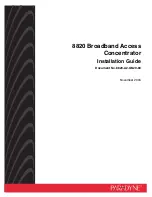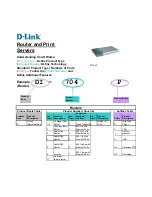
144
Chapter 5
Defining Connectivity Components
Overview
Overview
In order for the SNAplus2 node to communicate with other nodes, you
must configure connectivity with at least one adjacent node. A
connecting link can be configured to carry dependent traffic, independent
traffic, or both.You can have adapter cards for one or more link protocols
installed in your computer. Much of the information you need to enter to
configure connectivity depends on the link protocol you are using. The
remote node must also have an adapter card of the same type you choose.
For a list of the link protocols supported by SNAplus2, see “Defining
Ports, DLCs, and Connection Networks”.
To configure a link, you need to define a port as described in “Defining
Ports, DLCs, and Connection Networks”. In addition (in most cases), you
must configure a link station as described in “Defining Link Stations”.If
LUs on the local node are to communicate with a host using DLUR, you
must also define a DLUR PU on the local node as described in “Defining
DLUR PUs”.
When using the Motif administration program, a data link control (DLC)
is automatically configured as part of the configuration for the port. In
addition, you have the option of defining the port as part of a connection
network. When using command-line configuration, this configuration is
separate from port configuration.The information required for link
configuration depends on the link protocol, whether your network is an
APPN network, and on whether the link is for dependent traffic,
independent traffic, or both. In addition, the links that you need to
configure depend on what kind of communication you need to support:
Using 3270, RJE, or LUA
If you are going to use 3270, RJE, or LUA you need to
configure a link to the host computer. The link must be
configured for dependent traffic, and it must be
configured on the host computer as well as on the
SNAplus2 node, so consult your SNA network planner.
Using CPI-C, 5250, or APPC
If you are going to use CPI-C, 5250, or APPC and your
network is not an APPN network, you need to configure
links to all the adjacent nodes that you want to access.
These links must be configured for independent traffic,
Содержание HP-UX SNAplus2
Страница 4: ...4 ...
Страница 14: ...14 Contents ...
Страница 22: ...22 ...
Страница 23: ...23 1 SNA Terms and Concepts ...
Страница 65: ...65 2 Introduction to SNAplus2 ...
Страница 107: ...107 3 Administering SNAplus2 ...
Страница 132: ...132 Chapter3 Administering SNAplus2 Using the Command Line Administration Program ...
Страница 133: ...133 4 Basic Configuration Tasks ...
Страница 142: ...142 Chapter4 Basic Configuration Tasks Configuring Logging ...
Страница 143: ...143 5 Defining Connectivity Components ...
Страница 167: ...167 6 Configuring Dependent LUs ...
Страница 174: ...174 Chapter6 Configuring Dependent LUs Defining LU Pools ...
Страница 175: ...175 7 Configuring APPC Communication ...
Страница 208: ...208 Chapter7 Configuring APPC Communication Configuring APPC Security ...
Страница 209: ...209 8 Configuring User Applications ...
Страница 222: ...222 Chapter8 Configuring User Applications Configuring RJE Workstations ...
Страница 223: ...223 9 Configuring Passthrough Services ...
Страница 235: ...235 10 Managing SNAplus2 from NetView ...
Страница 248: ...248 Chapter10 Managing SNAplus2 from NetView Using UCF ...
Страница 249: ...249 11 Managing SNAplus2 Clients ...
Страница 300: ...300 Chapter11 Managing SNAplus2 Clients Managing HP UX Clients ...
Страница 301: ...301 A Configuration Planning Worksheets ...
Страница 337: ...337 B APPN Network Management Using the Simple Network Management Protocol ...
Страница 343: ...343 C Configuring an Invokable TP Using snaptpinstall ...
Страница 353: ...353 D Using SNAplus2 in a High Availability Environment ...
















































